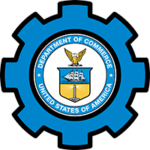
IT, Risk Management & Privacy Compliance Audit Solutions
Thorough data protection requires a regular audit process to prevent security breaches, which, these days, can come at any time. Things change rapidly, and risk management requires continued vigilance and staying on top of new standards and requirements. Continuum GRC offers your business thorough internal and external audits to ensure that your governance and risk management processes are up to speed against continually evolving threats.
It can be overwhelming, staying on top of it all. Our solutions make it much easier to make your audit reviews and compliance seamless. Ensure you’re meeting regulatory compliance at every stage with our expert reviews and solutions.
Experienced IT Compliance Audit
There are several steps needed for a successful IT compliance audit. Understanding the regulations and requirements, maintaining the documents, and working with the right personnel in your organization. Continuum GRC has years of experience working with organizations that handle the most sensitive kinds of data and ensuring that their practices are on point. We look at data encryption, policies, inventory, record keeping, systems, and more, then solve any weak spots.
Continuum organizes the compliance audit process to make it as clear and thorough as possible. You’ll know what (and who) is needed so you can get through it quickly and successfully.
Purpose and Objectives of an IT Compliance Audit
An IT compliance audit is about ensuring that a firm is sticking to the various industry, legal, and contractual regulations around its IT systems and data management processes. It checks the effectiveness of their IT framework, systems, and internal controls, as well as overall IT risk management solutions and daily operations.
The compliance audit process can be complex, but Continuum GRC has expertise in all aspects of audits and risk management to make it much simpler.
Having solid IT security practices and equipment in place is highly appealing to clients of all kinds, letting them know they can engage with your organization safely and securely.
Advantages of an IT Compliance Audit
An IT compliance audit gives your organization a much stronger security presence, ensures that you’re in compliance with all industry standards and regulations, and spots any system vulnerabilities before they become a bigger issue.
Being able to demonstrate regulatory compliance provides you with a competitive advantage and increases confidence among all stakeholders. It also uncovers ways in which your organization can improve inefficiencies for cost savings and increased productivity.
An IT compliance audit shows that your company makes a priority of security and safety. Using our compliance audit checklist, compliance auditors like Continuum GRC can make the audit process simple.
Frequently Asked Questions
Who conducts IT compliance and risk management audits?
Internal audits are conducted in-house to check the effectiveness of controls and risk-management practices. These audits are done throughout the year, determined by the organization’s risk management framework. An external audit is typically done by a third party and is typically performed annually or around timelines related to external regulations.
How does risk management relate to IT compliance audits?
The two are deeply connected. The compliance audit process can reveal weaknesses in IT security, controls, and practices. Having a clear understanding of these particular weaknesses can help to prioritize risk management audit and compliance efforts. Working through the audit checklist helps to create an effective, streamlined compliance program.
What are the key components of a cybersecurity audit and compliance process?
A compliance audit checklist for cybersecurity looks at key elements like the risks to a system’s security and data. It will simulate cyberattacks to uncover vulnerabilities and make recommendations for remediation.
The other part of an audit is in determining if an organization’s systems comply with related regulatory standards, like HIPAA or GDPR Audit .
How often should an IT compliance audit be conducted?
An IT compliance audit should be done, at a minimum, once a year. Certain regulatory standards require more frequent audits, as do organizations with different risk profiles or changes in internet technology.
High-risk industries undergoing rapid change or that have stricter regulations will usually have an IT audit semi-annually or quarterly.
What does a privacy compliance audit involve?
This audit thoroughly reviews how an organization collects, handles, and stores its data. What are the privacy policies? How is the data mapped at each stage of interaction? How are potential data breaches or non-compliance issues handled? How does the company adhere to current laws and relevant regulations?
How can businesses prepare for a compliance and risk audit?
Start by understanding the scope of the audit and reviewing your current compliance. Establish a timeline for the audit. Allocate resources and assign personnel to work with an external auditor during the compliance audit process. Establish a collaborative relationship with the auditor to understand and implement any new processes.
What are you waiting for?
You are just a conversation away from putting the power of Continuum GRC to work for you.
Contact us using the form below or calling us at 1-888-896-6207 for immediate assistance.
About these Standards
Compliance audits offer several benefits for businesses, ensuring they adhere to legal, regulatory, and internal standards while mitigating risks. Below is a concise overview of the key benefits, based on current information:
- Regulatory Compliance and Legal Protection:
- Ensures adherence to laws, regulations, and industry standards (e.g., GDPR, HIPAA, SOX), reducing the risk of fines, penalties, or legal actions.
- Demonstrates due diligence, which can mitigate liability in case of legal scrutiny.
- Risk Identification and Mitigation:
- Identifies gaps in processes, policies, or systems that could lead to non-compliance or operational risks.
- Helps prevent issues like data breaches, financial fraud, or workplace safety violations by addressing vulnerabilities early.
- Improved Operational Efficiency:
- Uncovers inefficiencies or redundancies in processes, enabling businesses to streamline operations.
- Standardizes procedures, reducing errors and improving consistency across departments.
- Enhanced Reputation and Trust:
- Demonstrates commitment to ethical practices, building trust with customers, investors, and stakeholders.
- Signals reliability to partners and regulators, potentially attracting more business or investment.
- Financial Savings:
- Avoids costly fines, penalties, or lawsuits by ensuring compliance.
- Reduces losses from operational risks, such as fraud or cybersecurity breaches.
- Better Decision-Making:
- Provides data-driven insights into compliance status, helping management make informed strategic decisions.
- Supports proactive planning to address potential regulatory changes.
- Employee Awareness and Accountability:
- Reinforces a culture of compliance through training and awareness, ensuring employees understand their responsibilities.
- Aligns staff with organizational policies, reducing human error-related risks.
- Competitive Advantage:
- Compliance with industry standards (e.g., ISO certifications) can differentiate a business in the marketplace.
- Attracts clients who prioritize working with compliant, ethical organizations.
Context from Web Information:
- Compliance audits are critical for industries like finance, healthcare, and manufacturing, where regulations are stringent. For example, audits ensure compliance with PCI DSS for payment security or OSHA for workplace safety.
- Regular audits help businesses stay ahead of evolving regulations, such as data privacy laws in the EU or cybersecurity requirements in the U.S.
- Small and medium-sized businesses benefit by identifying risks early, which is often more cost-effective than addressing issues post-violation.








































